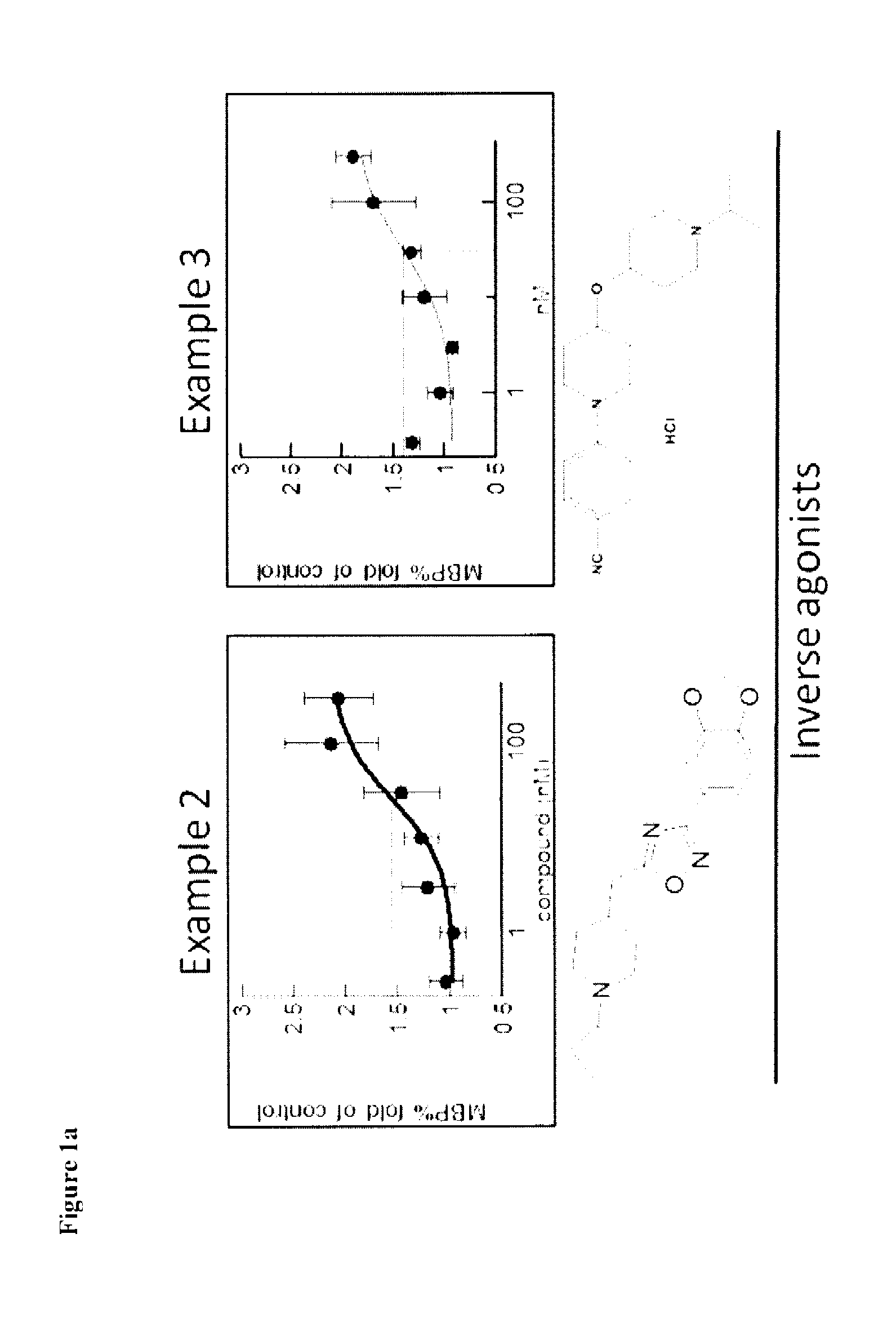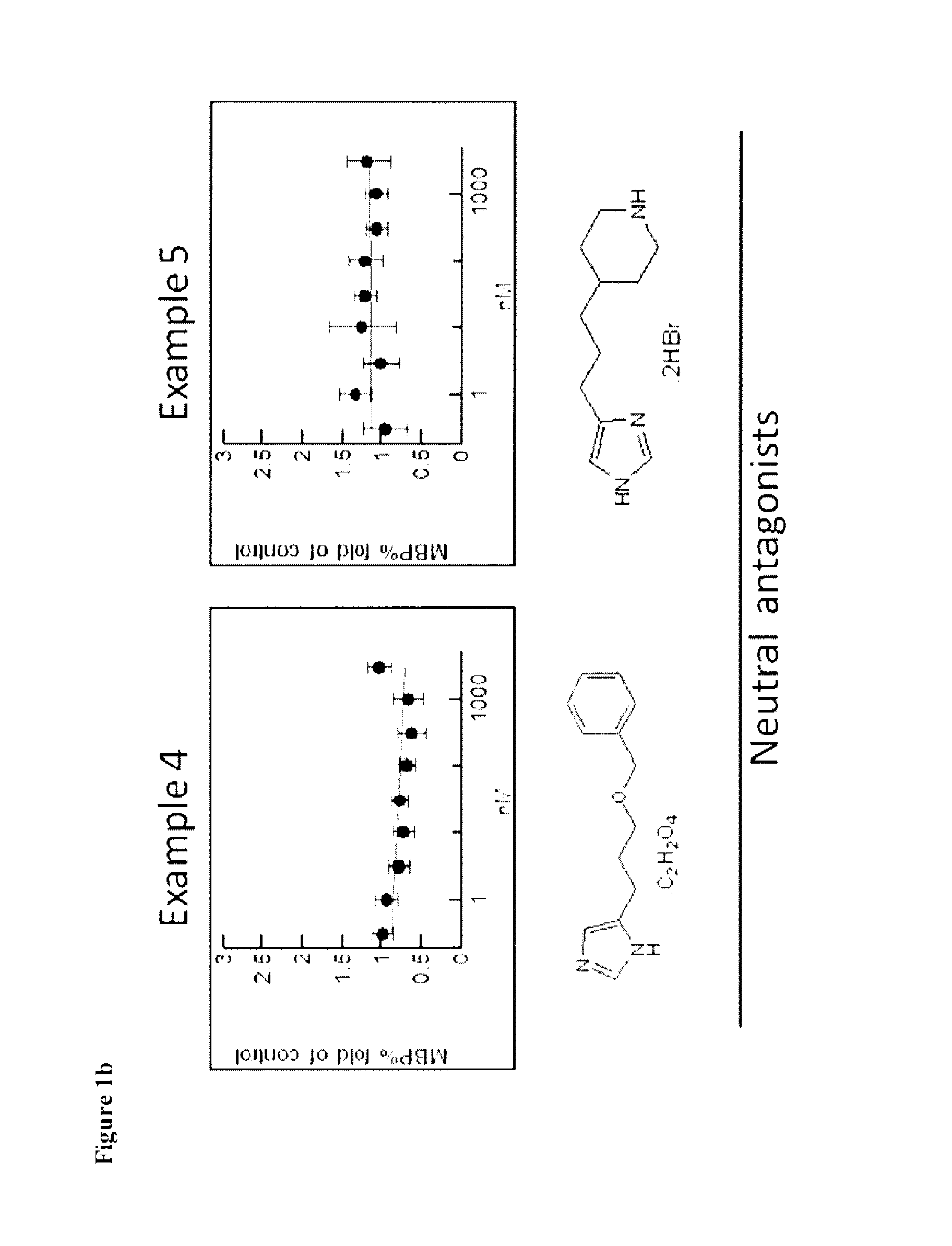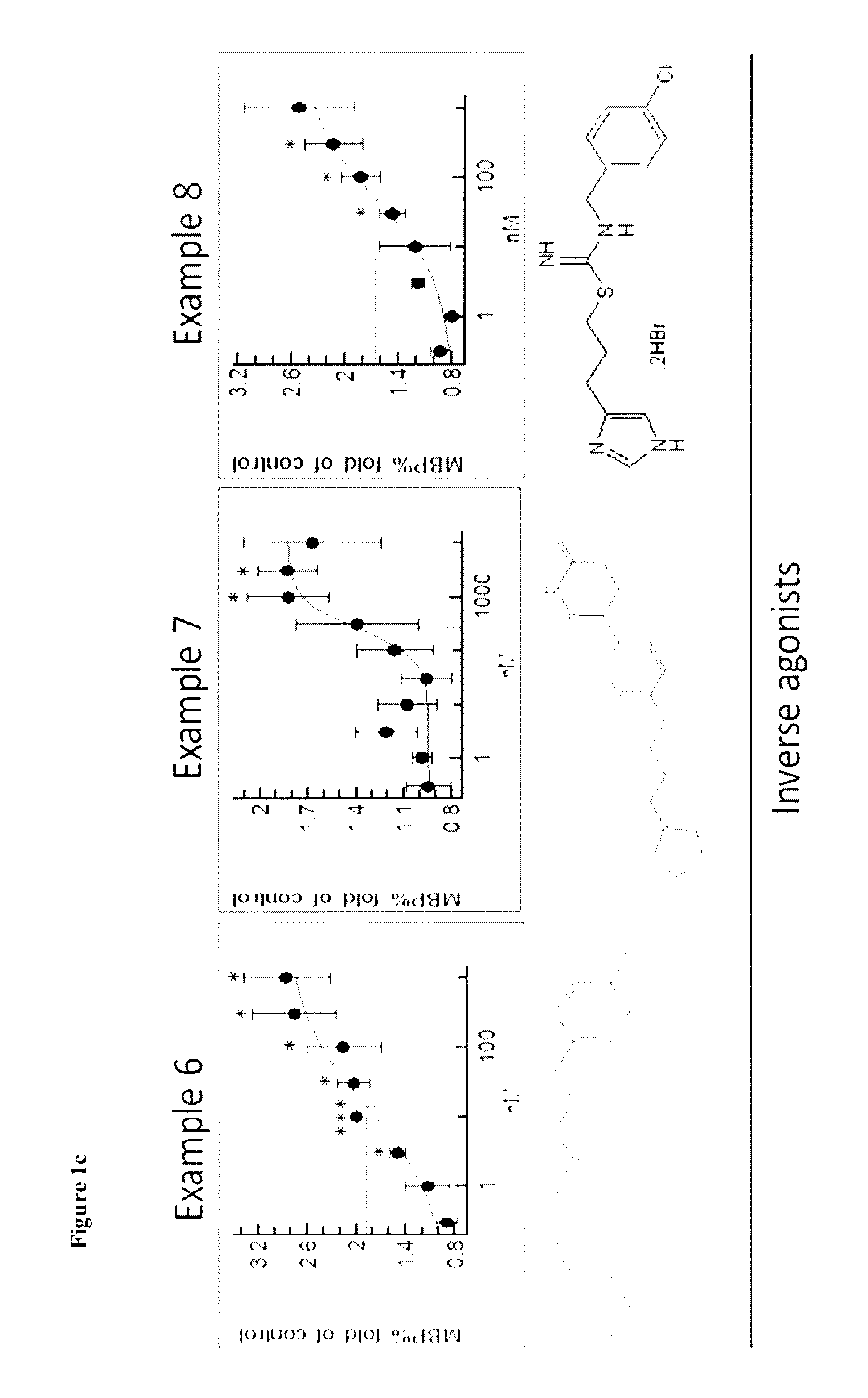Therapeutic Uses
a technology of oligodendrocyte precursors and ion channels, applied in the field of therapeutic uses, can solve the problems of reduced trophic support of axons, destabilization of action potential membrane potentials, subsequent disability, etc., and achieves the effects of enhancing remyelination, promoting oligodendrocyte precursor differentiation, and increasing oligodendrocyte precursor differentiation
- Summary
- Abstract
- Description
- Claims
- Application Information
AI Technical Summary
Benefits of technology
Problems solved by technology
Method used
Image
Examples
example 1
1-{6-[(3-cyclobutyl-2,3,4,5-tetrahydro-1H-3-benzazepin-7-yl)oxy]-3-pyridinyl}-2-pyrrolidinone
[0148]
[0149]A mixture of cyclobutanone (3.77 kg) and acetic acid (1.074 kg) were added to a solution of 1-[6-(2,3,4,5-Tetrahydro-1H-3-benzazepin-7-yloxy)-3-pyridinyl]-2-pyrrolidinone (WO2005 / 123723A1, description 3) (5.8 kg) in dichloromethane (58 L) and the mixture stirred at 25-35° C. for 3 hours, then cooled to 10-15° C. Sodium triacetoxyborohydride (5.72 kg) was added in four equal portions at intervals of 10 minutes, maintaining the temperature at 10-15° C. The resulting mixture was heated to 25-35° C. and stirred for 3 hours until complete reaction, as determined by TLC.
[0150]The reaction mixture was cooled to 5-10° C., the pH adjusted to pH 10-11 with aqueous sodium hydroxide solution (7.4% w / w), stirred for 30-40 minutes and the phases separated. The aqueous phase was extracted with dichloromethane (3×17.5 L). The combined organic phases were washed twice with aqueous sodium chloride...
example 2
3-(benzo[d][1,3]dioxol-5-yl)-5-((1-cyclobutylpiperidin-4-yl)methyl)-1,2,4-oxadiazole
[0152]
[0153]A solution of (Z)—N-(benzo[d][1,3]dioxol-5-yl(hydroxyimino)methyl)-2-(1-cyclobutyl-piperidin-4-yl)acetamide (5 g, 13.91 mmol) in N,N-Dimethylformamide (DMF) (30 mL) was heated to 120° C. and the reaction mixture was stirred at 120° C. for 24 hr. The reaction mixture was filtered and the filtrate was concentrated under reduced pressure, the crude product was purified by Pre-HPLC to afford 3-(benzo[d][1,3]dioxol-5-yl)-5-((1-cyclobutylpiperidin-4-yl)methyl)-1,2,4-oxadiazole as a white solid (1.5 g, 31.6%).
[0154]1H NMR (400 MHz, MeOD) δ: 7.60 (d, J=8.0 Hz, 1H), 7.44 (s, 1H), 6.94 (d, J=8.0 Hz, 1H), 6.04 (s, 2H), 2.90 (m, 4H), 2.74 (m, 1H), 2.04 (m, 2H), 1.68-2.03 (m, 10H), 1.40 (m, 2H).
[0155]MS (ES+) m / z 342.1 (MH+)
example 3
4-(4-((1-isopropylpiperidin-4-yl)oxy)piperidin-1-yl)benzonitrile hydrochloride
[0156]
[0157]4-(4-((1-isopropylpiperidin-4-yl)oxy)piperidin-1-yl)benzonitrile hydrochloride can be produced as described in WO2005014571.
PUM
| Property | Measurement | Unit |
|---|---|---|
| temperature | aaaaa | aaaaa |
| temperature | aaaaa | aaaaa |
| temperature | aaaaa | aaaaa |
Abstract
Description
Claims
Application Information
 Login to View More
Login to View More - R&D
- Intellectual Property
- Life Sciences
- Materials
- Tech Scout
- Unparalleled Data Quality
- Higher Quality Content
- 60% Fewer Hallucinations
Browse by: Latest US Patents, China's latest patents, Technical Efficacy Thesaurus, Application Domain, Technology Topic, Popular Technical Reports.
© 2025 PatSnap. All rights reserved.Legal|Privacy policy|Modern Slavery Act Transparency Statement|Sitemap|About US| Contact US: help@patsnap.com



